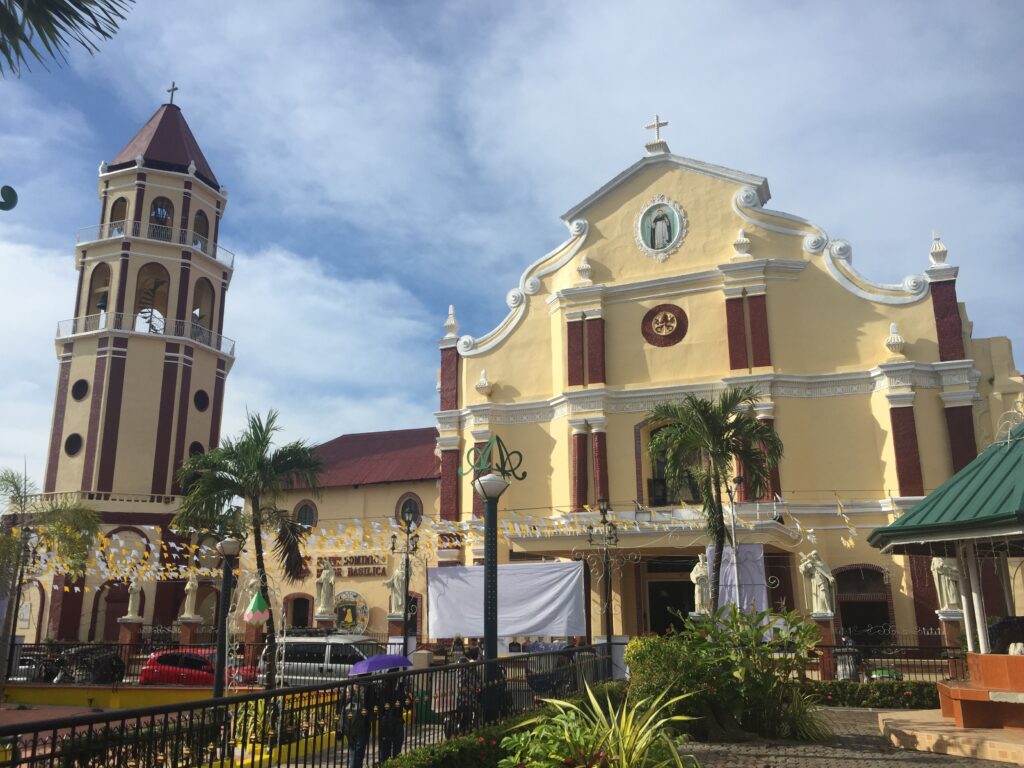Less than a decade following the declaration of the Manaoag Church as a minor basilica, the Church of Santo Domingo de Guzman in San Carlos City, Pangasinan, has also been elevated as such last year, making these as the first two in the province to have that distinction.
The Dominican-built church, one of the biggest in the country during its construction, was elevated to that status by the Vatican in 2022 together with the church of Taguig and was formally declared as a minor basilica in a solemn liturgical declaration on 14 January 2023, the last of the three-day or triduum Masses.
Fr. Mario Dominic Sanchez was installed as its first rector in the installation Mass officiated by Lingayen-Dagupan Archbishop Socrates Villegas the day after.
Villegas also concelebrated the said solemn declaration Mass with Papal Nuncio Charles Brown, and Fr. Gerard Timoner, the Master of the Order of Preachers. Manila Archbishop Jose Cardinal Advincula also attended the historic event.
Apart from them, members of the Dominican community — priests, brothers, nuns — were also in attendance as well as priests and seminarians from the archdiocese, priests serving elsewhere who are natives of the city, residents and other guests.


First in Asia
In his homily, Timoner said the church is the first in Asia to be declared a minor basilica and fifth in the world under the tutelage of Santo Domingo de Guzman, the founder of the Dominican Order.
The other Santo Domingo minor basilicas are in Italy with three and one in Argentina.
Timoner also said the church is the only one so far declared as such after the 800 anniversary of the Order of Preachers in 2016.
Speaking at the end of the Mass, Cardinal Advincula thanked Pope Francis for granting the request of the archdiocese and said the event is providential as it comes with the pontiff’s synodal invite in 2021 on the importance of communication, participation and mission.
He said the declaration is an opportune time as the country recently celebrated the quincentennial of the arrival of Christianity and that the declaration is a gift that comes with mission and responsibility.
“We are gifted to share,” she said adding the faithful should be missionaries wherever.


Minor basilica
Minor basilicas are churches declared by the Vatican either due to their architectural and artistic significance, its relation to a very important saint and related to big religious movements that influence the religiosity of a place.
Applications for the granting of the said status emanates from the archdiocese which are submitted to the Congregation for Divine Worship and the Discipline of the Sacraments in the Vatican.
These structures should be big and known for their histories, sacred images and relics, enough number of priests and lay ministers, and a good choir.
Once declared, these structures are places of Catholic evangelization and instruction, houses of worship where plenary indulgence are given on certain occasions to those praying inside.
These also receive the tintinnabulum (apostolic bell); conopaeum (apostolic umbrella); papal symbol on their banners, furnishings and seals; and the right of the rectors to wear a distinct mozzetta (a short cape) on top of their surplices.
Churches are only declared up to the status of “minor” basilicas as there are only four basilicas in the world, St. Peter’s in the Vatican and the basilicas of St. John Latteran, St. Mary Major and St. Paul Outside the Walls, all located in Rome.
These basilicas have direct connections to the Pope traditionally and historically.


San Carlos Church
The present church of San Carlos dates to the 18th century. After moving to its present location, its fourth, Fr. Cristobal Ausina, OP, built the brick church from 1770 to 1773 but this structure was damaged during the earthquakes of the 1790s. As a result, the walls were lowered, foundations strengthened and buttresses added not later than 1804.
However, this church and convent were razed by fire in 1822 and was rebuilt before 1864. Its bell tower, built by Fr. Alvarez Carrozal in the late 19th century, was still unfinished at the turn of the 20th century with only the first level completed. It was only completed using concrete decades after.
This church has no official declarations from the national cultural agencies but was marked by the then National Historical Institute in 1989.
San Carlos City
San Carlos is theorized to be the site of the encomienda of Labaya, one of five encomiendas in Pangasinan (coastal area) and Caboloan (inland area) in the late 16th century.
That encomienda might be the one owned by Jimenez del Pino where Dominican missionaries were given a house of light materials upon their arrival in 1587, the year they founded Binalatongan.
Binalatongan, the former Labaya encomienda was then located west of the Agno River in the areas of what are now towns of Aguilar or Mangatarem. Its first chapel, most likely of light materials, was dedicated to the Our Lady of the Rosary.
The town later moved east of the Agno River and along the San Juan River (maybe today’s Urbiztondo) in the 16th century but burned down in 1718. This area affected by the Andres Malong Revolt of 1660 to 1661 was later called as Baleydaan or old town.
In 1721, Binalatongan moved again to a placed called Abagbagaan or Lucban (later Cabolo), but this was destroyed by the Juan de la Cruz Palaris Revolt of 1762 to 1765.
Following this conflict, the town moved to its present location and was renamed San Carlos after the patron saint of the then reigning Spanish king Charles III.
In the 19th century, the towns of Aguilar, Mangatarem and Urbiztondo were formed out of the territory of San Carlos and in 1967, Basista separated to become another municipality.
San Carlos was declared a city in 1965 through Republic Act 4487.
